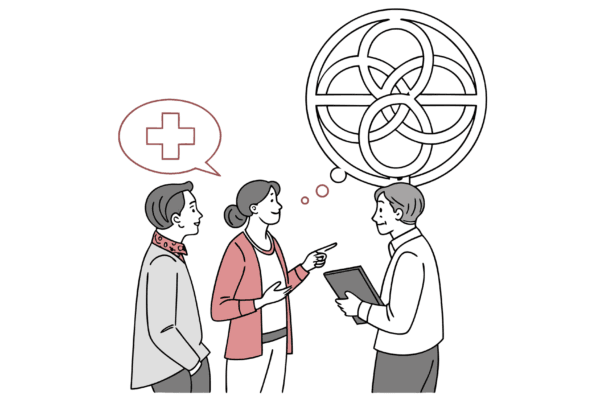Selling your Ortho & MSK practice is a major life decision. You have poured years into building a reputation, caring for patients, and managing a team. Now, as you consider your next chapter, the San Francisco market presents a unique opportunity, but navigating it requires a clear strategy. This guide offers insights into the current landscape, from valuation to post-sale planning, to help you make an informed decision.
Curious about what your practice might be worth in today’s market?
Market Overview
The market for orthopedic and musculoskeletal practices is exceptionally strong. A growing and aging population with increasing musculoskeletal conditions fuels a high demand for your services. Nationally, the orthopedics market is projected to grow from $57.3 billion to over $74 billion by 2028. San Francisco, as a hub of innovation and wealth, amplifies this trend. Buyers, including sophisticated private equity groups and large orthopedic platforms, are actively seeking to partner with established, high quality practices in prime locations. They see the value in your patient base, referral networks, and the potential to introduce new technologies like AI and virtual MSK solutions. This is not a time of uncertainty. It is a time of opportunity for practice owners who are well prepared.
Key Considerations for San Francisco Owners
Moving from “opportunity” to a successful “outcome” requires careful thought about what makes your practice unique and what you want for its future. The right buyer will not just look at your revenue. They will evaluate your entire operation.
Strategic Positioning
What sets your practice apart in the competitive Bay Area? Perhaps you have adopted innovative orthopedic software, pioneered efficient patient workflows, or built a strong brand in a specific subspecialty. Highlighting these differentiators is not just for marketing. It is a core part of justifying a premium valuation to strategic buyers who understand their value.
Operational Readiness
A potential buyer will scrutinize your practice’s financial and operational health. Are your financial records clean and straightforward? Is the practice overly dependent on you, the owner, or can it thrive with other providers? Addressing these issues before a sale can significantly strengthen your negotiating position and smooth the entire process.
Preserving Your Legacy
What happens to your staff and patients after the papers are signed? For many owners, this is the biggest concern. The good news is that modern deal structures are not all or nothing. It is possible to find a partner who will protect your team, maintain clinical standards, and honor the legacy you have built.
Market Activity
The idea of selling is no longer a quiet consideration. It is an active and dynamic market. We are seeing a significant consolidation trend where larger, specialized orthopedic groups are partnering with local practices. National players like Orthopedic Care Partners and U.S. Orthopaedic Partners are examples of groups actively acquiring practices to build regional density. This activity is driven by private equity investment, which sees the orthopedic space as a stable and growing sector. For you, this means there is not just one potential buyer. There is an entire landscape of them, each with different goals and structures. This creates a competitive environment where a well positioned practice can attract multiple offers and find a partner that truly aligns with their financial and personal goals.
The Sale Process Explained
The journey from decision to closing can feel complex, but it follows a clear path. Understanding these stages demystifies the process and highlights where preparation is key.
- Preparation and Valuation. This is the foundational step. It involves organizing your financial statements and, most importantly, getting a professional valuation. This is not just about a number. It is about understanding your practice’s strengths and weaknesses through a buyer’s eyes.
- Confidential Marketing. Your practice is confidentially presented to a curated list of qualified buyers. The goal is to create a competitive dynamic among multiple interested parties without disrupting your staff or patients.
- Negotiation and Due Diligence. Once offers are received, you negotiate the best terms. The chosen buyer then conducts due diligence, a thorough review of your financials, contracts, and operations. This is where many deals encounter unexpected challenges, making pre sale preparation so important.
- Closing and Transition. After finalizing legal documents, the sale is closed. A well managed plan ensures a smooth transition for you, your team, and your patients under the new ownership structure.
Uncovering Your Practice’s True Value
What is your practice really worth? It is the most common question we hear, and the answer is more complex than a simple formula. While your accountant might focus on net income, sophisticated buyers look at Adjusted EBITDA (Earnings Before Interest, Taxes, Depreciation, and Amortization). This figure normalizes your earnings by adding back owner specific expenses to show the true cash flow of the business. This single metric can dramatically change your practice’s perceived value.
A professionally prepared valuation tells a story. It reframes your practice from a simple P&L statement into a strategic asset.
| Metric | A Simple View | The Buyer’s View |
|---|---|---|
| Reported Net Income | $600,000 | $600,000 |
| Owner Salary Add-Back | Not Included | +$150,000 |
| One-Time Expenses | Not Included | +$50,000 |
| Adjusted EBITDA | $600,000 | $800,000 |
| Valuation (@ 6.5x) | $3,900,000 | $5,200,000 |
This process of normalization and strategic framing is what separates an average outcome from a premium one. It is based on real market data, not a rule of thumb.
Planning for Life After the Sale
A successful transaction is not just about the check you receive at closing. It is about setting up your future, protecting your team, and securing your legacy. Planning for this starts long before the deal is done.
Your Evolving Role
Selling does not always mean walking away. Many owners choose to stay on for a period, focusing purely on clinical work without the headaches of administration. Others transition into leadership roles within the larger new organization. Defining your desired role early helps find a partner who supports your vision.
Ensuring Team Continuity
Your staff is one of your practice’s greatest assets. Buyers know this. A key part of any negotiation is ensuring your team is retained, and their futures are secure. This continuity is critical for a smooth transition and protecting the patient experience you built.
The “Second Bite of the Apple”
Many deals now involve sellers retaining some equity in the new, larger entity. This is known as “rollover equity.” It aligns your financial interests with the new partner and gives you the potential for a second, often larger, payout when that bigger platform is sold again in the future.
Frequently Asked Questions
What is the current market outlook for selling an Ortho & MSK practice in San Francisco?
The market for orthopedic and musculoskeletal practices in San Francisco is exceptionally strong, driven by a growing and aging population with increasing musculoskeletal conditions. The national orthopedics market is projected to grow from $57.3 billion to over $74 billion by 2028. San Francisco’s affluent and innovative environment amplifies this trend, with many sophisticated buyers, including private equity groups and large orthopedic platforms, actively seeking to acquire high-quality practices in prime locations.
How should I prepare my Ortho & MSK practice for sale to get the best valuation?
Preparation involves organizing your financial statements, ensuring operational readiness, and getting a professional valuation. Buyers focus on Adjusted EBITDA (Earnings Before Interest, Taxes, Depreciation, and Amortization), which normalizes earnings by adding back owner-specific expenses to reflect true cash flow. Highlighting your practice’s unique strengths, such as innovative software, efficient workflows, and strong referral networks, helps justify a premium valuation.
Who are the typical buyers for Ortho & MSK practices in San Francisco?
Typical buyers include sophisticated private equity groups, large orthopedic platforms, and regional orthopedic groups looking to consolidate practices. National players like Orthopedic Care Partners and U.S. Orthopaedic Partners are actively acquiring practices in the area to build regional density. These buyers value your patient base, referral networks, and the potential to introduce new technologies.
What happens to my staff and patients after selling my practice?
Many modern deals include protections for your staff and patients to preserve your legacy. Buyers often agree to retain your team and maintain clinical standards. Negotiations typically involve ensuring team continuity to protect the patient experience and provide stability during the transition to new ownership.
What are the typical steps in the sale process of an Ortho & MSK practice in San Francisco?
The sale process usually includes: 1) Preparation and valuation, where financial records are organized, and the practice is professionally valued; 2) Confidential marketing, presenting the practice to curated qualified buyers; 3) Negotiation and due diligence, where offers are evaluated and the buyer reviews financials and operations; 4) Closing and transition, which involves finalizing legal documents and managing a smooth handover to new ownership.



